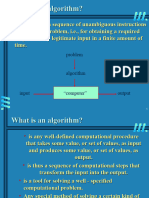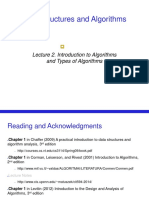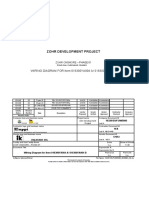0% found this document useful (0 votes)
146 views53 pagesUSTH Introduction
This document provides an introduction to an undergraduate course on algorithms. The course aims to introduce students to algorithms and computational thinking. It will cover algorithm description, analysis and design. Students will learn to express algorithms with pseudocode and diagrams. The course will involve weekly theory lessons, practical sessions, and assignments. Grading will be based on exams, exercises, and class participation. Prerequisites include basic programming concepts but no prior programming experience is required.
Uploaded by
nhng2421Copyright
© © All Rights Reserved
We take content rights seriously. If you suspect this is your content, claim it here.
Available Formats
Download as PDF, TXT or read online on Scribd
0% found this document useful (0 votes)
146 views53 pagesUSTH Introduction
This document provides an introduction to an undergraduate course on algorithms. The course aims to introduce students to algorithms and computational thinking. It will cover algorithm description, analysis and design. Students will learn to express algorithms with pseudocode and diagrams. The course will involve weekly theory lessons, practical sessions, and assignments. Grading will be based on exams, exercises, and class participation. Prerequisites include basic programming concepts but no prior programming experience is required.
Uploaded by
nhng2421Copyright
© © All Rights Reserved
We take content rights seriously. If you suspect this is your content, claim it here.
Available Formats
Download as PDF, TXT or read online on Scribd
/ 53


















































































